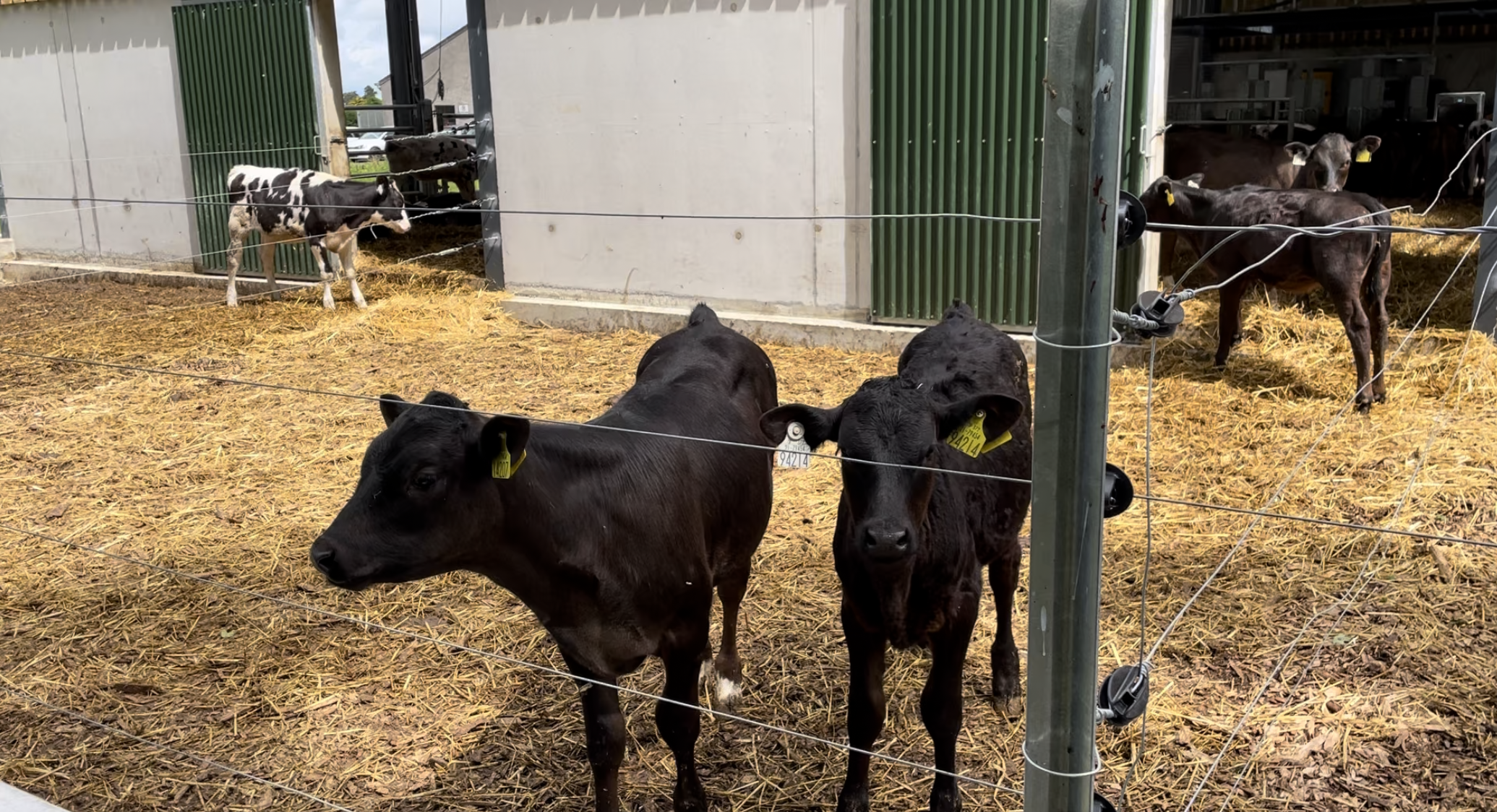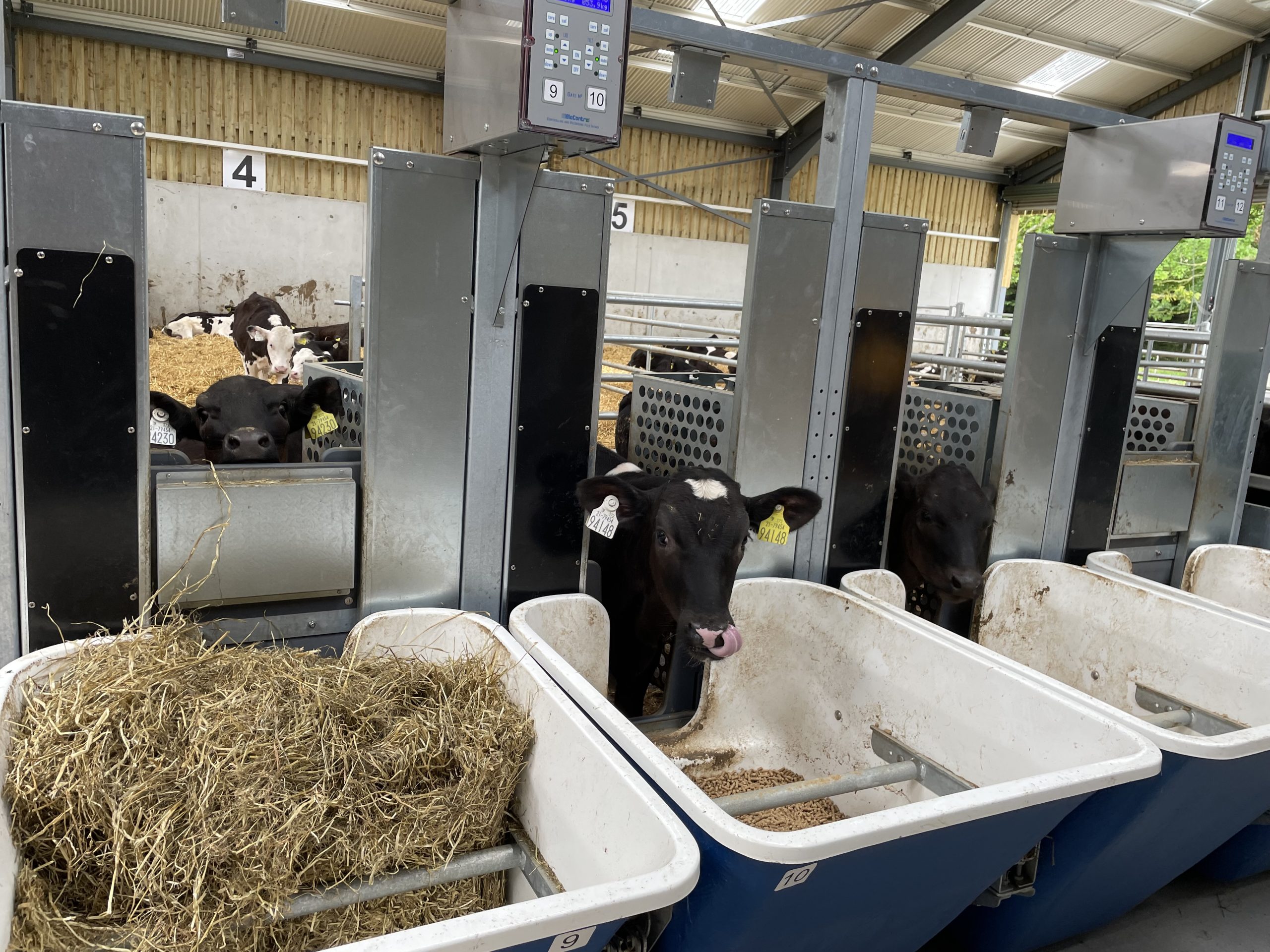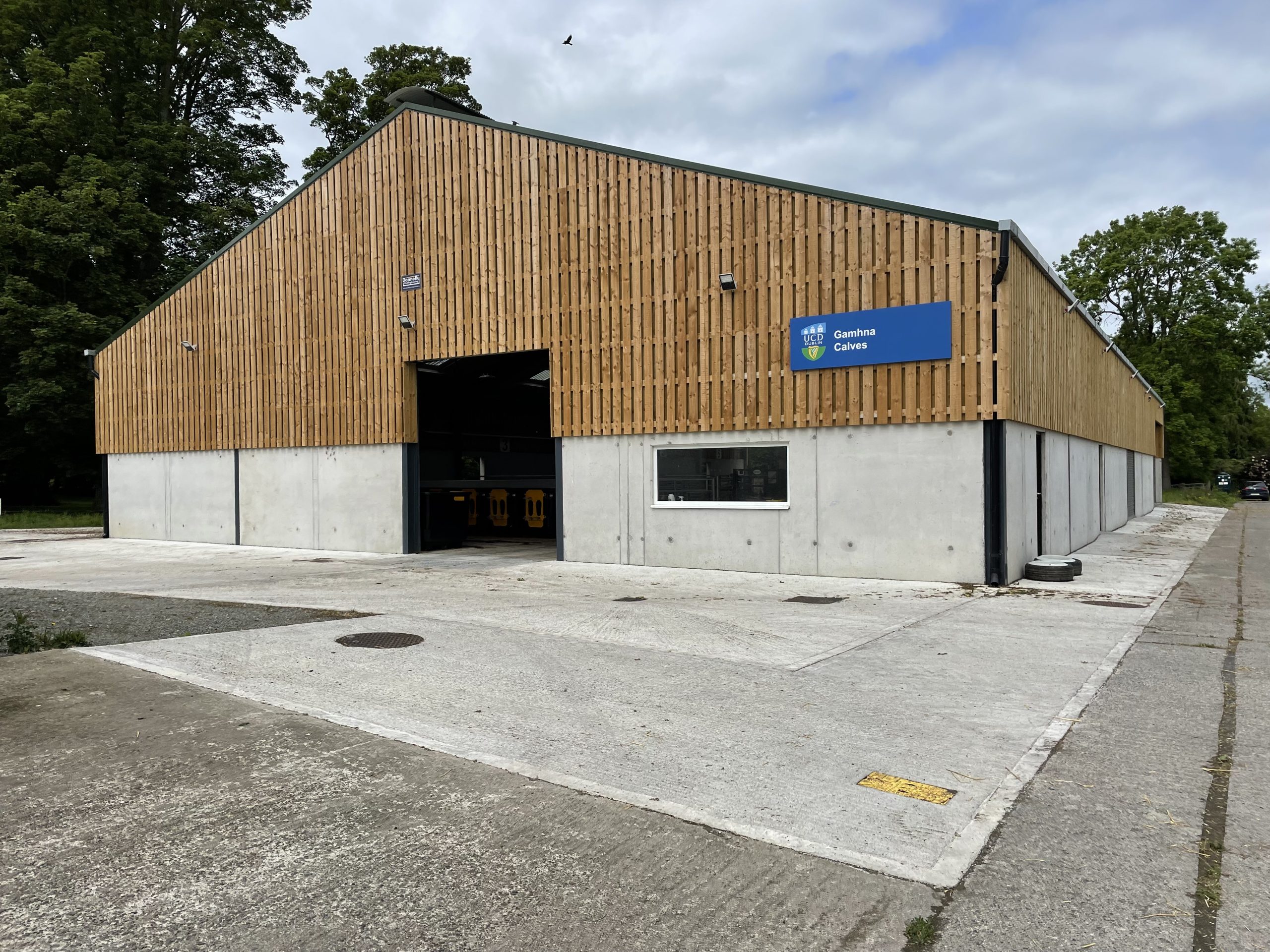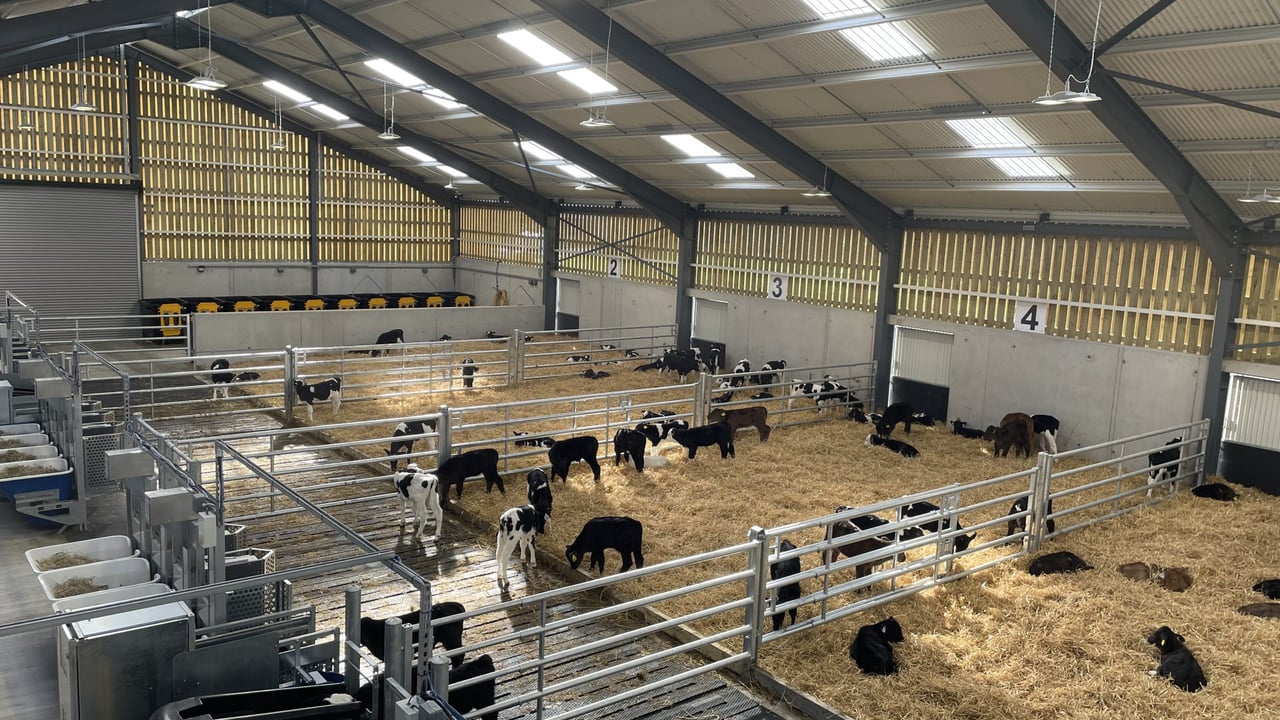Advantage Beef Programme

The state-of-the-art centre was officially opened earlier this year, and Agriland travelled to the facility on Wednesday (May 28), to hear how research has been progressing since.
Speaking to Agriland, professor of ruminant nutrition at the UCD School of Agriculture and Food Science, Tommy Boland explained how the research centre came into being.
He said: “There was a recognised gap in the industry for a facility like this nationally and indeed, what we have here at UCD Lyons Farm would stack up against the best facilities internationally.”
“The wider industry and UCD came together to put the facility into place to address some of the questions and some of the challenges that calf-rearing is facing.”
The following companies and entities supported the development of the facility:
- ABP Food Group;
- Dairy Research Ireland;
- FBD Trust;
- JFC;
- MSD;
- Ornua.
As of Wednesday, May 28, both the replacement dairy heifer calves and the dairy-beef calves were housed in the shed.
The replacement dairy heifer calves were going to grass on Thursday (May 29), at an average of 15 weeks-of-age. This group has averaged in excess of 1kg/day in live weight gain since birth.
The dairy heifers were weaned on a stepped-down weaning regime and were completely removed from milk feeding at approximately eight weeks of age when they had achieved a concentrate intake of 1.2kg/day for three consecutive days
Post turnout, these heifers will be stepped down off their concentrate feed for between three to four weeks to allow for dietary transition to a grass diet.
The dairy calf to beef group is on a different rearing programme and have been achieving an average daily gain of 800-900g/day from birth to now.
The dairy-beef calves will be be reared to beef in a grazing trial taking place in conjunction with ABP Food Group.
The UCD professor outlined some of the key research areas of focus.
He said: “We’re looking at issues around nutritional management of the young calf, optimising growth in that early life phase, setting those animals up well to perform in pasture-based systems, whether that’s a dairy system or a dairy calf to beef system.
“We’re addressing some more novel aspects as well, like enteric methane emissions and investigating when a calf begins to produce methane and what quantity of methane is produced by that young calf.”
The research at the UCD calf facility is being led by Dr. Alan Kelly in collaboration with Prof. Karina Pierce as well as Prof. Boland.
“Our future work is going to look at early-life intervention to mitigate methane production by dairy and beef calves, and also we will examine accelerated growth programmes to maximise growth and feed efficiency, particularly in the dairy calf-to-beef animals,” Prof. Boland said.

We will be exploring how can we better capture that efficiency of gain that exists in that young calf.”
Current research is examining whether they can grow those calves to a 30-40kg heavier weight before they are turned out onto the grazing systems “so that we can maximise the efficiency with which those calves then convert forage into growth and into meat ultimately”.
The dairy-beef calves will remain housed for another five to six weeks and research will continue.
Prof. Boland explained: “We’re going to look at both forage to concentrate ratio and plane of nutrition for these dairy-beef calves”.
“What we’re looking at here is the excellent capacity of these young calves to convert feed to gain compared to an older animal, where you need more kilos of feed to get a kilo of gain and optimise the transition to grass based systems.
“Firstly we will investigate the nutritional and biological aspects of delivering that extra gain and secondly, we will examine the additional gain from an economic perspective”

Prof. Boland said the research is examining the biology of the system, nutritional aspects, digestive physiology, and health aspects of the calf.
“The economics are going to vary from year to year, depending on input price and output price but what won’t change is the biology of the animal.
So, it’s trying to capture that underlying biological mechanism, and then the decision needs to be made by farmers and by advisors in any given year looking at input versus output costs, whether you chase that additional growth in the early-life period, or whether you don’t.”
Weaning methods are also being explored at the research facility.
Prof. Boland said: “We’re looking at weaning and dietary transition programs, to minimise the weaning stress challenge and enable the calf to properly transition to a solid feed diet and capture the feed efficiency potential in that immediate post-weaning phase”.
“The JFC Evolution calf feeder facilitated the range of milk feeding and weaning strategies we used this year and also allowed us to observe key aspects of calf feeding behaviour’
“Once those calves are weaned off milk, they remain in the shed getting access to forage and concentrates which are fed using precision feeding systems allowing full data monitoring”.
“They’ll be going out to grass at between 18 and 20 weeks-of-age onto the platform, and concentrates will be fully removed from the diet over the course of 10 days”
“Then once they are turned out to pasture, the dairy calf of beef animals are stepped down off concentrate to zero over a 10 to 14 day period as we want those animals performing from a pasture-only diet.

Commenting on the strategy of removing concentrates from the calf diet during the first season at grass, Boland said: "I think it's working very, very well.
"When we look at any of the Hereford-cross animals that we've used here so far, those animals are getting slaughtered to produce a 315kg carcass at between 19.5-21 months-of-age."
